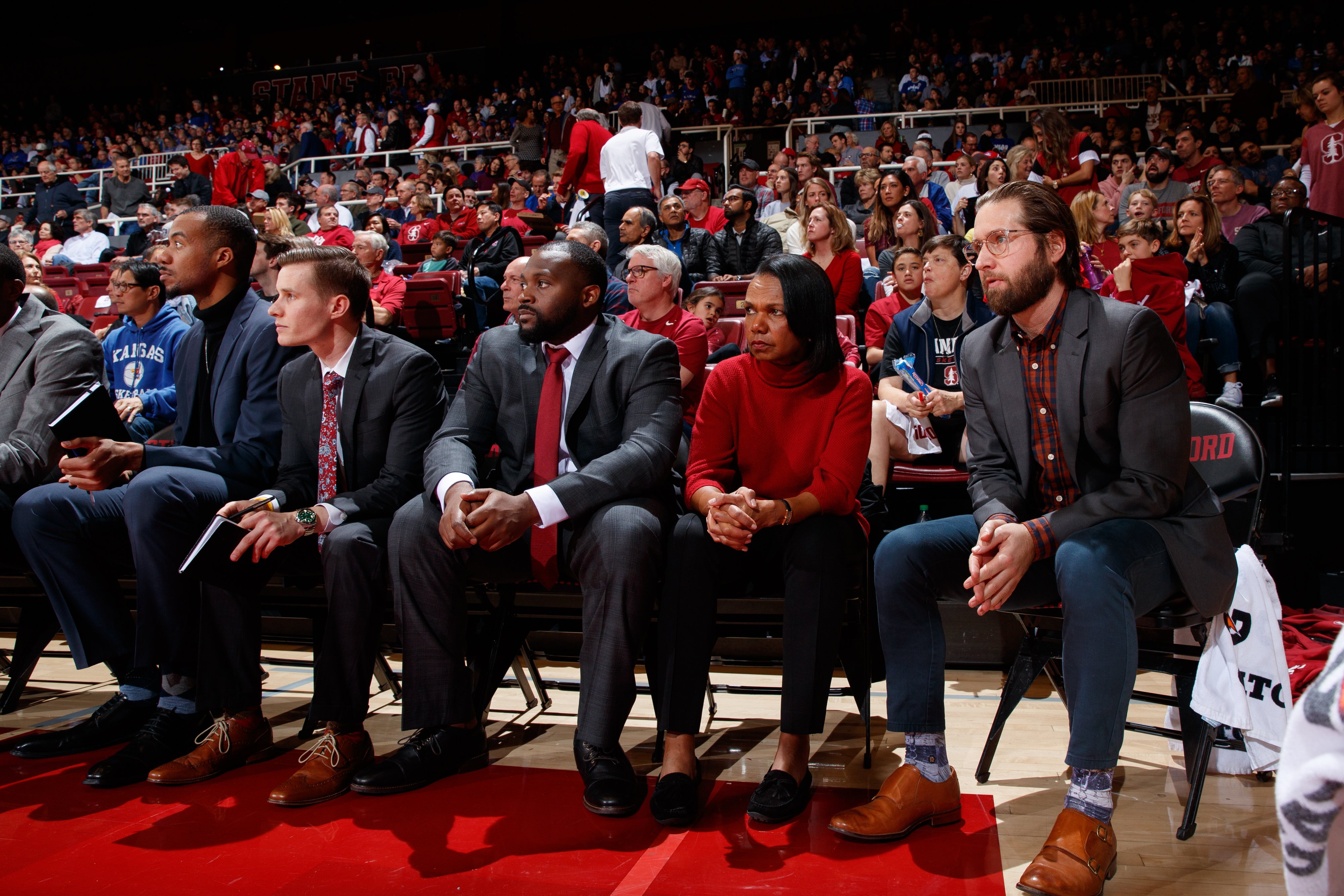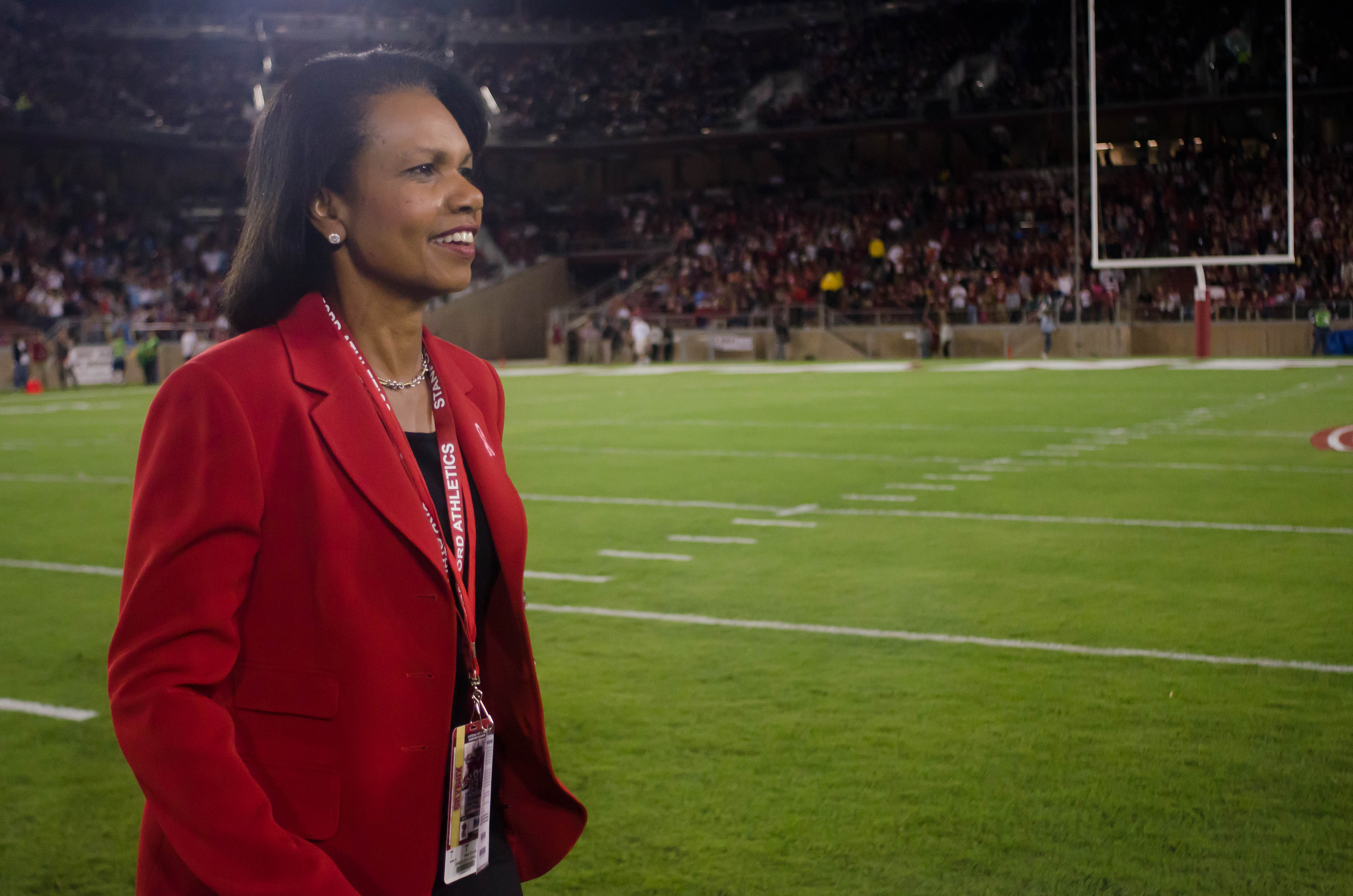When most people think of Condoleezza Rice, quite a few first’s come to mind: the first Black woman to serve as the U.S. Secretary of State, the first woman to be named National Security Advisor and the first Black woman to become a provost of Stanford University.
Adding onto this impressive resume, the former Secretary of State is also an avid sports fan with many athletic bona fides, including being one of the first female members of the Augusta National Golf Club, a former College Football Playoff Selection Committee appointee, and, most recently, a partial owner of the Denver Broncos.
Yet, after decades of breaking barriers, one of Rice’s toughest challenges came about this past academic year when interim President Richard Saller, a close colleague, asked her to serve as the special advisor on athletics to the president.
Rice, the director of the Hoover Institution — a public policy think tank at Stanford — and a longtime supporter of Stanford athletics, gladly accepted the role. Just 10 days later, the Pac-12 conference fell apart.
“I have my day job at the Hoover Institution and this side gig that I am involved in,” Rice joked about the advisory role. “I thought it was going to be a light activity, helping out. All of the sudden, it was the entire month of August trying to figure out where we were going to land.”
As special advisor, Rice drew on experiences from her prior roles in Washington, D.C. and at the University. She said that she used her negotiation experience as Secretary of State to get Stanford enough votes to enter the Atlantic Coast Conference (ACC), and her time as provost to understand the ins and outs of Stanford athletics and the budget.
Stanford eventually found a home in the ACC, but that was only the tip of the iceberg in the ever-changing landscape of college athletics, especially with new developments for athlete compensation through Alston payments, name, image and likeness (NIL) deals and revenue sharing.

As a proponent of amateurism — the idea that NCAA athletes should not receive remuneration for their athletic services — Rice draws a line between fairly compensating athletes and losing sight of the academic experience, highlighting that the resources from a university are provided in exchange for athletic talent.
“I’m old-fashioned,” Rice said. “I think that the value proposition is that you get a scholarship, the best training possible, the best coaching possible, great nutrition and a chance to display your talents. Then, if you’re good enough, you become an employee of a professional league. That’s the world that I’m most comfortable with.”
Rice added, “There are places that have not benefited the student athlete in the right way, where the degree wasn’t front and center. But if you can be in a place where you can get a scholarship where another student is working 20 hours a week and taking out loans to do the same thing, that’s a pretty good value proposition.”
Despite her support of the amateur model, Rice still sees value in NIL.
“NIL when it’s done right is a good idea,” Rice said. “NIL goes bad when it becomes an inducement for transfer or for recruitment.”
Stanford, which has struggled to utilize the transfer portal in previous years, relies primarily on freshmen recruits. Rice is concerned about how the increasing trend of transferring schools in the NCAA, especially in pursuit of monetary compensation, detracts from the value of a college education.
“I don’t love the transfer portal,” Rice said. “I worry about the stories that I hear of student athletes who’ve gone to three universities in three years. What kind of academic experience is that?”
As the daughter of a school teacher and guidance counselor, Rice has always seen academics as a priority.
“You want to recognize that your sport is going to be a relatively small part of your life,” she said. “Even if you make it to the top of the mountain athletically, you are going to want to have gotten your education.”
Rice implores collegiate athletes to create an backup plan outside of athletics.
“I understand having a plan B,” Rice said. “My plan B turned out to be Secretary of State.” Her plan A was to become a great concert pianist.
Through the whirlwind of changes to college sports, Rice has a clear vision for the future of Stanford athletics: excellence.
“If we’re going to recruit athletes, we say to them to be excellent in the classroom and be excellent on the playing field. We have to make that possible,” Rice said. “That means they need to have great coaching, physical training and terrific facilities.”
To contribute to this culture of excellence, Rice encourages the rest of the student body to get involved.
“To the students: come to the games,” she said. “Show up, have dorm challenges. Be there to support your fellow students in what they do.”
With the move to the ACC, an East Coast-based conference that requires cross-country travel for competitions, Rice says that Stanford may consider new offerings like online classes that would benefit not only student-athletes, but all students.
While Rice’s role as special advisor was temporary for Saller’s transition, the Hoover Institution director plans to stay involved with Stanford athletics and attend ACC games this fall.
